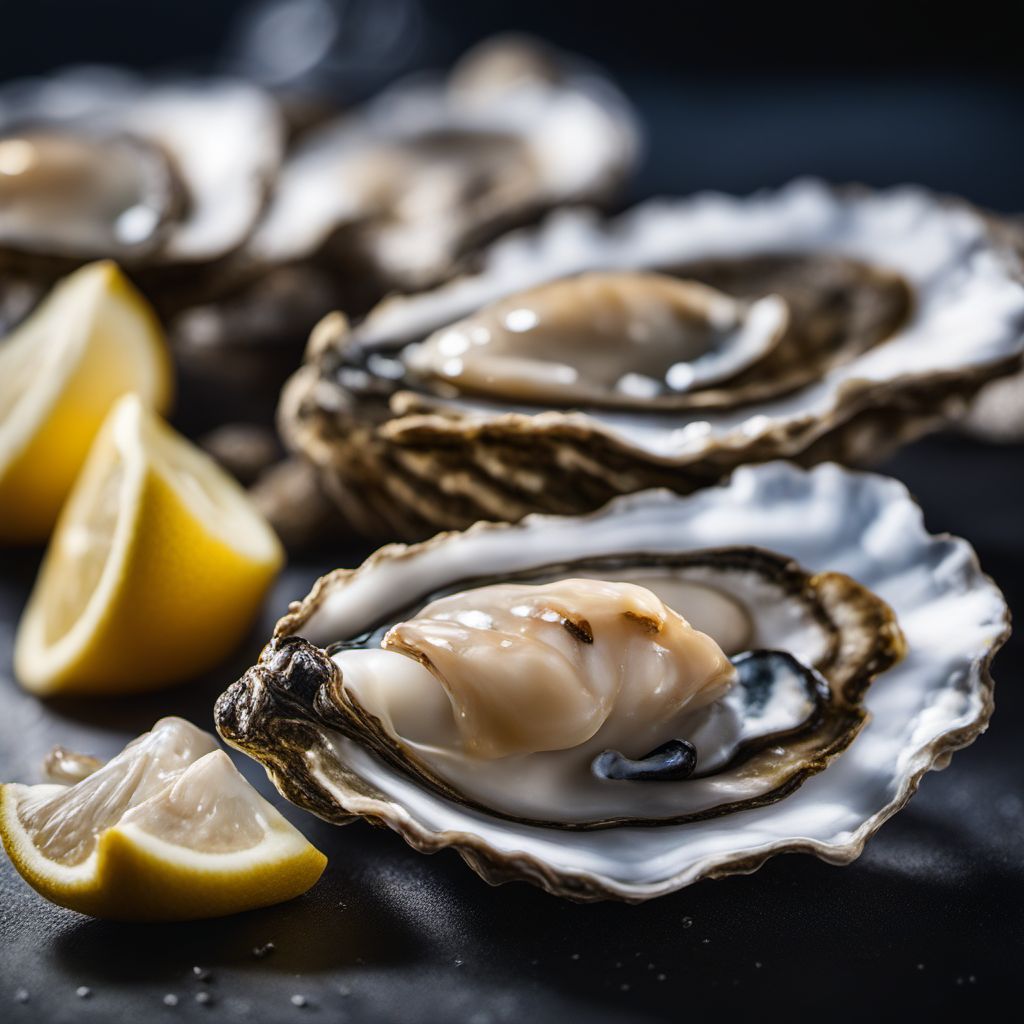
Ingredient
Oyster, european
The Ocean's Delicacy
European oysters are characterized by their smooth, elongated shells and briny, slightly sweet taste. They have a firm yet tender texture, with a creamy and succulent flesh that is often enjoyed raw or cooked in various culinary preparations.
Origins and history
European oysters, also known as flat oysters, have a rich history dating back to ancient Roman times. They were highly valued by the Romans and were considered a delicacy in many European cultures. Today, they are cultivated in coastal regions worldwide and are particularly associated with French and British cuisines.
Nutritional information
Oysters are a low-calorie food that is rich in essential nutrients such as protein, omega-3 fatty acids, zinc, and vitamin B12. They are also a good source of iron and vitamin C.
Allergens
May contain shellfish allergens.
How to select
When selecting European oysters, look for ones that have tightly closed shells or shells that close when tapped. Avoid oysters with cracked or open shells, as they may be spoiled. Fresh oysters should have a pleasant oceanic smell.
Storage recommendations
To maintain their freshness, store live oysters in the refrigerator at a temperature between 35°F and 45°F (1°C and 7°C). Keep them in a mesh bag or a shallow container covered with a damp cloth to prevent them from drying out. It is best to consume oysters within a day or two of purchase for optimal flavor and quality.
How to produce
European oysters are typically grown in oyster farms or harvested from natural oyster beds. They require clean, nutrient-rich waters to thrive and are often cultivated using suspended culture systems or bottom culture methods.
Preparation tips
European oysters can be enjoyed raw on the half shell, steamed, grilled, or used in various seafood dishes such as oyster stew, po' boys, or Rockefeller-style preparations. They can also be incorporated into pasta, risotto, or stuffing recipes for added flavor and texture.
Culinary uses
European oysters are commonly used in classic French dishes like Oysters Rockefeller and Oysters Mignonette. They are also a popular ingredient in seafood platters, ceviche, and sushi rolls. Additionally, they can be used to enhance the flavor of sauces, soups, and seafood bisques.
Availability
European oysters are commonly available in coastal regions of Europe, including France, the United Kingdom, and Ireland. They are also cultivated in other parts of the world, such as the United States, Canada, and Australia.



